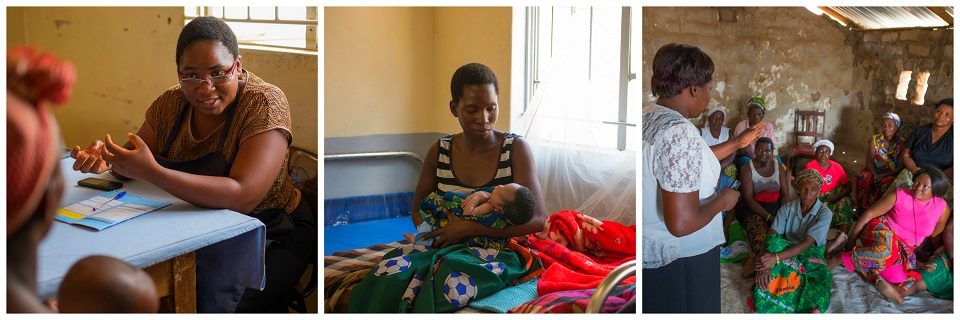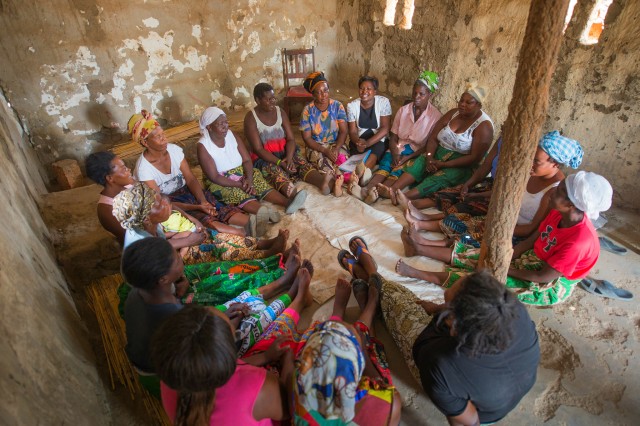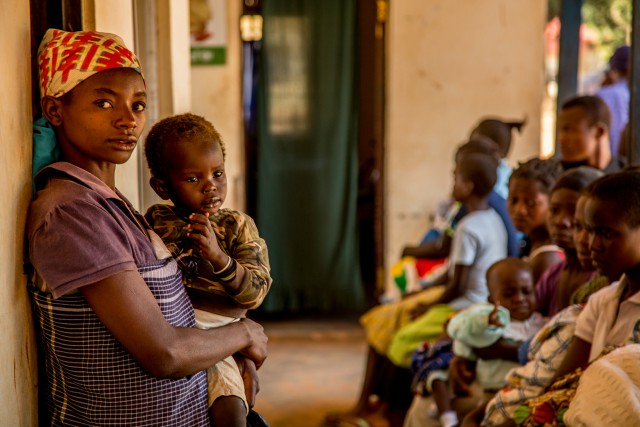Optimizing Rural Faith-based Health Provision to Support SDGs

The support of faith-based health services will be critical to the success of the Sustainable Development Goals (SDGs). Such support was similarly key in working toward the Millennium Development Goals (MDGs), and even more could have been achieved had faith-based services been better funded and integrated.
As the global community seeks to optimize the contributions of all stakeholders under the SDGs, optimizing the faith sector contribution is essential to meeting health targets.
Faith actors provide significant health coverage in many developing countries and are often located in remote communities where access and coverage by the state and private sector are limited. It is important that faith-based actors that provide health services are given consideration under the financing mechanisms currently in development by the Country Health Platforms, and that their own resource mobilization strategies are incentivized. A fully optimized faith-based actor can deploy assets in support of attaining SDG health targets—especially as a complement to the government and the private sector in the hardest-to-reach areas. The expertise and knowledge garnered over decades in rural settings can help guide and build deeper public-private partnerships and encourage cross-sector partnering. If Country Health Platforms can optimize the experience and knowledge obtained from faith-based rural experience, it can lead more viable and more innovative business models that will emerge to serve the needs of a variety of populations targeted under the SDGs.
Principles that have been adopted at a country level, such as the Global Financing Facility and the Country Health Platforms, set the foundation for faith-based health sector contributions. Yet, as with all frameworks, success will be determined by effective communication and execution. The principles are as follows:
- Leadership by the ministry of health (MOH).
- Meaningful participation by all stakeholders.
- Inclusiveness in building the business case.
- Transparency and mutual accountability.

Women and mothers participate in the Village Savings and Loan Association in Kabwe, Zambia.
Provided the mechanisms seek to engage all partners in a respectful and fully participatory manner, these principles are capable of embracing more robust participation by faith actors. Just as the international health community experienced a strong response from the faith-based health sector to the challenge of HIV/AIDS and the MDGs, the sector can be responsive and effective once again under the SDG health targets. What we learned from the experience of HIV/AIDS and the MDGs is that national planning and budgeting must function in an effective and accessible manner, avoiding burdensome and overly complex requirements. Faith-based actors are often ill-equipped to handle overly complex mechanisms or are reticent to dilute what they believe is core to their mission—“a more person-centered approach.” Armed with learning from the MDG and HIV/AIDS experience, Country Health Platforms can offer better coordinated and better financed opportunities for faith-based facilities to integrate and align with national systems and policies.
Over the past two or three decades, faith-based health service providers have witnessed immense changes in each country and within each faith-based health system, and many assumptions that were once thought true 20 or 30 years ago are no longer valid. These changes, which have significantly altered how faith actors are organized and achieve their missions, are as foundational as shifts in formal governance structures, adoption of new business models, leadership staffing from within country, and greater integration with governments and the MOHs.
Most faith actors are better coordinated (and sometimes better managed) under religious health umbrella associations where they share better practices, coordinate with government and donors, and take advantage of joint economies of scale. These associations are working with the Country Health Platforms and donor communities, and the old assumptions that once guided an understanding of faith-based actors’ contributions to the country’s health system should be reassessed.
One questionable and often-repeated assumption is that faith-based providers will continue to cover many of the more rural and hard-to-reach populations. While it is true that in Africa, for example, faith-based facilities are often responsible for meeting between 30 and 60 percent of rural health needs, their future presence and operations are not guaranteed. Though these systems have proved resilient over many decades it does not refute the fact that they face vast stress to continually keep their doors open. In many instances, faith facilities’ financial support from their traditional denominational constituents (often from the North) is in steep decline.
Many of these faith facilities happen to be the sole providers in rural settings, where their absence would create a sobering gap in overall country health plans. What is more concerning is that these faith actors are often at the forefront of environmental health issues such as clean water, sanitation, and nutrition as well as education). As Country Health Platforms consider strategies and eventual resource allocation, it is important that governments and donating parties are well aware of this burden.
Another assumption is that most faith-based health actors are typically not-for-profit facilities with little sophistication in managing and evolving complex organizational models. However, recent data had demonstrated that faith-based providers manage a full spectrum of different organizational models. Currently, faith-based health actors comprise publicly owned government facilities, private for-profit facilities, fully owned not-for-profit facilities, and many community-led, community-owned, as well as community-administered health centers.

A woman and her infant at a PMTCT site in Yambio, South Sudan whose objective is to ensure that children of HIV-positive mothers are born infection-free.
Faith-based actors are often very savvy at building health business models that address the unique challenges of rural settings. Not only are these models varied at responding to local demand, but they are evolving rapidly due to changes on both the international and the national landscapes. For these rural health systems to be viable and not remain dependent on declining traditional sources of revenue, the way these actors achieve their mandates must be reshaped by innovation and responsiveness to market forces.
The old models of mission-run and -administered systems from the North are quietly giving way to nationally administered systems, or being adsorbed into broader country health associations with greater integration into the national frameworks and MOH policy oversight. Given the evolving nature of faith-based actors, thoughtful consideration should be given to incentivizing how these resilient, innovative health providers can assist governments and donors by attracting resources to strengthen health outcomes under the SDGs—especially in rural, hard-to-reach areas.
This is even more critical given that most faith-based actors operate in rural environments where low incomes and long distances often limit viable business models. Much of the current thinking from the Country Health Platform stakeholders is dedicated to building economically viable health systems modeled on urban and peri-urban demand and the proximity of clientele. This approach does not serve the majority of rural-based health providers, among which faith-based actors are prominent.
With the advent of the SDGs, the Global Financing Facility, and the Country Health Platforms, an opportunity exists to secure better health services provision for the most remote and difficult to reach populations. The experience gained and the expertise developed over decades by the many faith-based health providers in rural settings can provide significant consumer insights and organizational models. This body of knowledge and organizational expertise should form the basis for both strategy and financing innovations being considered at Country Health Platforms.
Bruce Wilkinson is the CEO and president at CMMB. Since first traveling to Ghana as a Peace Corps volunteer in 1977, Bruce has been dedicated to the alleviation of poverty in the developing world. Before moving to New York to join CMMB in 2012, Bruce worked for twenty-four years with World Vision International, serving in Senegal and Zambia, as well as in Washington, DC.
* First published in the Spring 2016 edition of Global Health and Diplomacy.